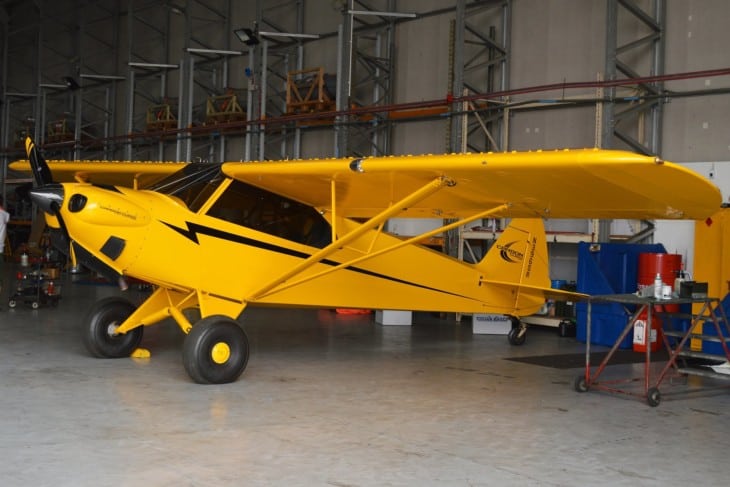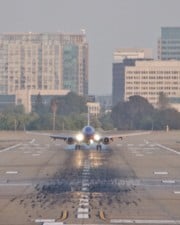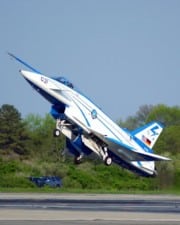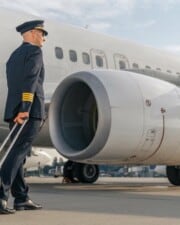There are many types of pilot license issued by the FAA. Many people are familiar with the private and commercial licenses, but you might not realize that there are several others you can get, such as the sport pilot certificate.
Table of Contents
- Sport Pilot Certificate and Overview
- Sport Pilot Certificate Requirements
- What Tests Do You Need to Take to Become a Sport Pilot?
- Sport Pilot Limitations
- Sport Pilot Certificate Cost
- Recreational or Sport Pilot Certificate
- Medical Requirements for Sport Pilots
- Sport Pilot Certificate Validity and Renewal Requirements
The sport pilot license was created to provide an easy and less expensive way for a pilot to fly for fun. A sport pilot is limited to flying small, two-seat aircraft that weigh less than 1,320 pounds. These planes are commonly called LSAs, or light sport aircraft.
Sport Pilot Certificate and Overview
While most people refer to them as pilot licenses, the term that the FAA uses is certificate. Most pilots use the terms interchangeably, so a sport pilot certificate is the same as a sport pilot license.

Sport pilots are trained, licensed in, and allowed to fly LSAs. They cannot operate larger aircraft. But the reverse is not valid, and a recreational, private, commercial, or airline transport pilot can fly an LSA so long as they possess the correct category and class ratings on their certificate.
Since the overall goal of making light sport aircraft was to reduce entry barriers for the average person, it only follows that the FAA would also make training easier and more affordable. To go along with this new category of aircraft, the FAA created a new category of pilots.
The justification for this new license was to get more people interested in aviation. With ballooning fuel and training costs, getting a private pilot license has become much more expensive than it was just a few decades ago.
By reducing operating costs by using small and slow aircraft, and by reducing training requirements to make the course a little shorter, the FAA believed they could encourage more people to try out flying as a hobby.
Sport Pilot Certificate Requirements
One of the goals in creating the sport pilot certificate was to make flying more fun and accessible. To keep the process as simple as possible, training is more tailored to an individual’s flying. With more training, a sport pilot has more privileges.
Unlike other pilot certificates, where the holder of a license is guaranteed to be allowed to do everything anyone else with that license can, a sport pilot certificate is only the beginning.
The basic sport pilot license only covers aircraft with top speeds of 87 KCAS, while the definition of an LSA covers craft with speeds up to 120 KCAS. If a sport pilot wants to fly above 87 KCAS, they need more training and an instructor endorsement. The same is true if a pilot wants to operate in controlled airspace.
The minimum flight times and aeronautical experience a pilot needs to receive a sport pilot license depends on the category and class they are seeking. For an airplane single-engine land certification, the pilot will need at least 20 hours of flight time, including 2 hours of flight training and a solo cross country.
What age do you need to be to get a sport pilot certificate? The FAA requires that pilots be 16 years or older to get the student pilot certificate required before soloing. Students can begin dual training at any age. To apply for the sport pilot license, a person needs to be at least 17 years old.

What Tests Do You Need to Take to Become a Sport Pilot?
Like all FAA pilot certificates, the sport pilot license requires the passing of three tests. The first is a written, multiple-choice exam known as the knowledge exam. You can prepare for it by using an online home study course or attending in-person ground school classes.
The second and third tests required are combined into one event that pilots call the “checkride,” but the FAA calls the practical exam. There is a one-on-one oral examination of the applicant’s knowledge by an FAA inspector or a designated examiner. If the applicant passes the oral exam, they get in the plane and take the examiner on a flight.
It might sound like a lot, but most pilots are well prepared for their written exams and check rides. Flight instructors work very hard to ensure their students are safe pilots, and in the end, these tests are used to determine that a student meets minimum basic standards.
Sport Pilot Limitations
The sport pilot license is notably more limited than other licenses offered by the FAA. This is partly by design—the goal of the sport pilot certificate was to make flying more approachable and more fun for the “weekend” pilot.
But by making the license easier to get and less expensive, the FAA has to place some limitations on it. A private pilot certificate allows much more freedom–freedom to fly larger, faster airplanes and freedom to travel virtually anywhere in the world.
Many pilots who fly for fun only want to operate small affordable aircraft near their home airport. They may live in the country and never go anywhere near airports with radar controllers and control towers. Why would they want to take the time to learn all of the same things that a private pilot would need to learn?
Here are a few of the specific things that sport pilots cannot do. Keep in mind, though, many of these privileges can be earned simply by flying with a flight instructor and receiving training in them. The flight instructor then endorses the sport pilot’s logbook, and they are good to go.
According to FAA regulations, sport pilots cannot:
- fly for hire, or carry passengers or cargo for hire
- fly in the furtherance of business
- carry more than one passenger
- operate at night unless endorsed
- operate in Class A airspace (anywhere over the US above 18,000 feet MSL)
- operate in Class B, C, or D airspace unless endorsed to do so
- operate outside of the US without prior permission from the foreign government
- aircraft salespeople cannot conduct demonstration flights
- operate above 10,000 MSL or 2,000 AGL, whichever is greater
- fly without being able to see the surface at all times
- operate when visibility is less than three miles
- operate an aircraft with a max speed of more than 87 KCAS unless endorsed
- operate as crew on a two-crew member certified aircraft
- tow any object
- operate contrary to any limit on their pilot or medical certificates, or driver’s license
- fly contrary to any aircraft limitation
Sport Pilot Certificate Cost
The exact cost that a sport pilot certification will cost is complicated to pin down. By far, the most expensive part of training is the time spent in the aircraft. If you’re able to find a “deal” on an aircraft, you can save a lot of money on training.
But this is a double-edged sword because you might find a super-cheap plane to rent. But when you drive to the airport and see the thing, you might not want to get in it!
The second big component of training is spent on your time with your instructor. And just like the plane, some instructors are cheap, and others are not. It would help if you shopped around to find the one you can work with and learn from best because the right flight instructor can save you thousands of dollars.
Once you know how much your plane and instructor cost per hour, you can start doing a little math. The FAA’s minimum time to get the sport pilot license is 20 flight hours. If your plane and instructor cost $150 per hour, you’ll spend $3,000.

Unfortunately, real life isn’t this clean cut and easy. The FAA time given in the regulations is the minimum. Most pilots need more than that before they’re ready to take their checkride.
Additionally, the regulations state you need training in aeronautical knowledge areas as well. This is to get you ready for the written and oral exams. The more independent studying you do, the more money you can save here.
All flight schools will quote a cost to get a pilot’s license, but you must always read the fine print. How many hours is the cost based on, and what is the average time students take to get the license at that school? Schools vary considerably in the quality of their aircraft and their instructors’ skill, so students benefit by shopping around.
Recreational or Sport Pilot Certificate
The FAA has many other grades of pilot certificate beyond the sport pilot level. The next one is known as the recreational pilot certificate.
The recreational pilot license is suitable if you want to fly bigger planes. It has some similar limits to the sport pilot license. For example, you can still only fly with one other passenger. But you can fly any plane that has four seats or less, which opens up a lot more options than the sport pilot license does.
If you want the most freedom and choices with your flying, you want to look into the private pilot certificate. You don’t need to get the sport pilot license before getting a higher grade, so you can start with the private license if you want to.
A private pilot license allows the holder to fly any aircraft they’re rated for, as long as it is for private, non-commercial use. They can also fly internationally since the FAA’s private license is recognized by ICAO-member countries.
Medical Requirements for Sport Pilots
The FAA issues medical certificates for pilots to ensure that they are healthy enough to fly safely. The sport pilot was designed from the ground up to be easy for people to get to fly for pleasure, so the medical requirements are pretty lax.
To get the license, you must get a third-class medical certificate. This is the lowest grade of medical, and it is valid for 60 months for those under 40 years old and 24 months for those over 40.
But once a pilot has earned their sport pilot certificate, they don’t need to keep the medical current. So long as they hold a valid state driver’s license and they have no known medical issues that could affect their flying, they are good to go.
FAA medical certificates are issued by certain approved doctors who are known as aviation medical examiners (AMEs).
Sport Pilot Certificate Validity and Renewal Requirements
FAA pilot licenses are issued with no expiration date, meaning that they never technically expire. But pilots must maintain currency, meaning that to be legal to fly, they must take some action to ensure they’re safe to fly.
First and foremost, pilots must have a flight review from a flight instructor every two years. This flight review usually entails some simple flying and some reviewing of ground work, but if a pilot has not flown for some time, it might be more involved.
A pilot must also have some recent flight experience if they are going to carry passengers. This is simply having three takeoffs and three landings within the last 90 days. If a pilot isn’t current to carry passengers, they can simply fly three takeoffs and three landings solo and then carry passengers as they usually would.
Related Posts












